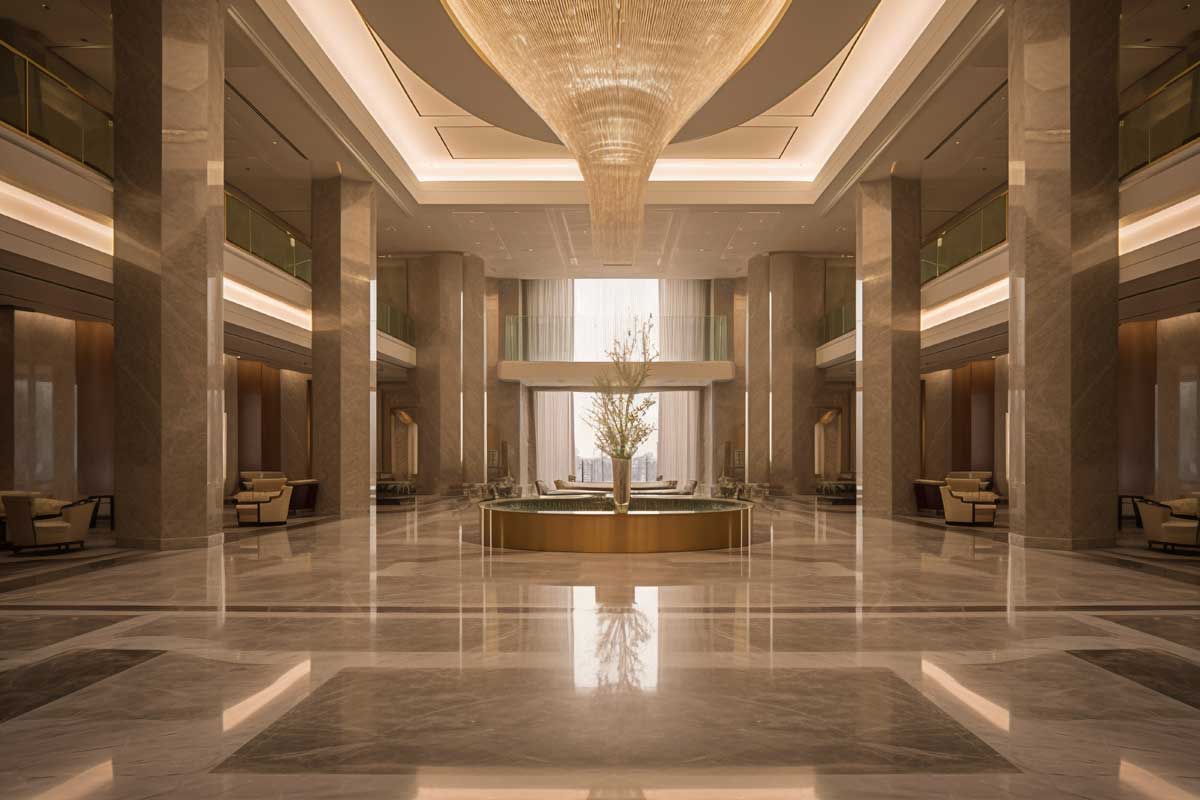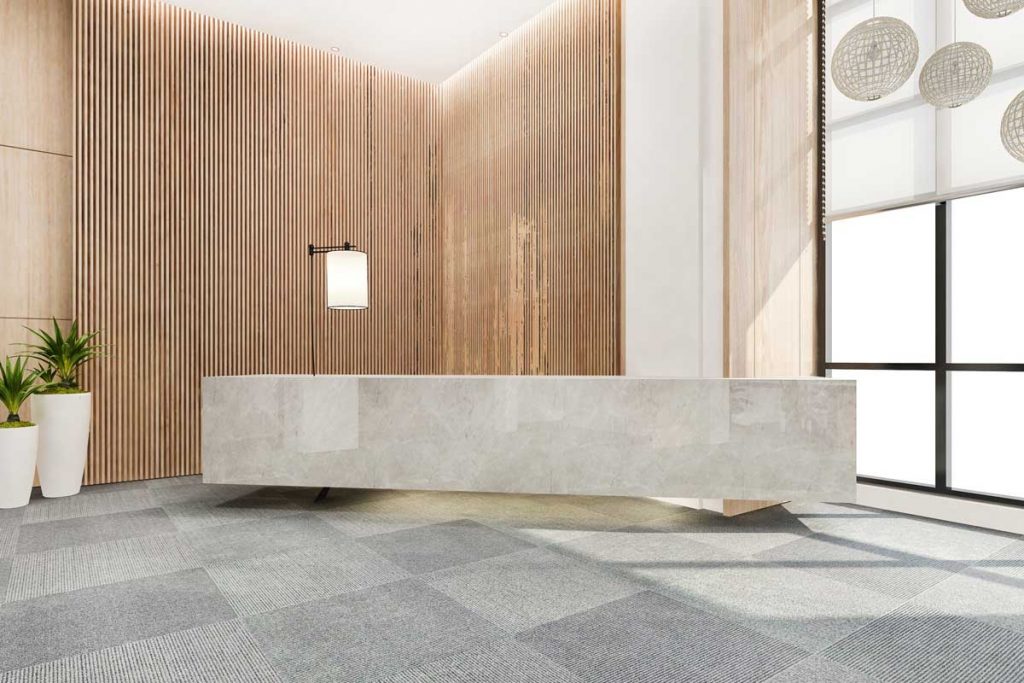In the competitive world of hospitality, the design of a space can make or break the guest experience. One of the most impactful design elements is the use of tile and ceramics. These materials offer a unique blend of aesthetic appeal, durability, and versatility, making them a favorite choice among interior designers and architects. This blog post explores the transformative power of tile and ceramics in hospitality spaces, highlighting their key benefits and offering insights into the latest trends.
The Advantages of Tile and Ceramics in Hospitality Design
Aesthetic Versatility
One of the standout features of tile and ceramics is their aesthetic versatility. Available in a vast array of colors, patterns, textures, and finishes, they can complement any design style, from modern and minimalist to classic and opulent. Tiles can mimic the look of natural stone, wood, or even fabric, allowing for endless creative possibilities.
For instance, porcelain tiles can replicate the appearance of marble, providing a luxurious feel without the high maintenance associated with natural stone. Similarly, ceramic tiles can be designed to look like hardwood, offering the warmth of wood with the durability of tile.
Durability and Longevity
Hospitality environments, such as hotels and restaurants, experience heavy foot traffic and wear and tear. Tile and ceramics are known for their exceptional durability, making them ideal for these high-traffic areas. They are resistant to scratches, stains, and moisture, ensuring that they maintain their beauty and functionality over time.
Ceramic and porcelain tiles are also highly resistant to thermal expansion, making them suitable for areas exposed to varying temperatures, such as outdoor patios and pool areas. This durability translates into lower maintenance costs and longer lifespans, offering excellent value for money.
Easy Maintenance
In the hospitality industry, cleanliness and hygiene are paramount. Tile and ceramic surfaces are easy to clean and maintain, contributing to a hygienic environment. Their non-porous nature prevents the absorption of liquids, reducing the risk of stains and bacterial growth. Regular cleaning with simple solutions is usually sufficient to keep these surfaces looking pristine.
Environmental Benefits
Sustainability is becoming increasingly important in hospitality design. Many tiles and ceramics are made from natural materials and can be recycled at the end of their life cycle. Additionally, advances in manufacturing have led to the production of eco-friendly tiles that use less energy and produce fewer emissions.
For example, some manufacturers use recycled materials in their tile production, while others employ energy-efficient processes. Choosing sustainable tiles can help hospitality businesses reduce their environmental footprint and appeal to eco-conscious guests.
Trends in Tile and Ceramic Design for Hospitality
Large Format Tiles
Large format tiles have become a popular choice in hospitality design due to their sleek and modern appearance. These tiles can create a seamless look with fewer grout lines, enhancing the sense of space and making areas feel larger and more open. They are especially effective in lobbies, bathrooms, and dining areas.
Textured Tiles
Textured tiles add depth and interest to any space. From subtle, tactile surfaces to bold, three-dimensional designs, textured tiles can create striking feature walls or add a unique touch to floors. They are particularly effective in creating focal points in lobbies, bars, and reception areas.
Patterned Tiles
Patterned tiles are making a strong comeback, adding a touch of artistry and personality to hospitality spaces. Geometric patterns, intricate mosaics, and even custom-designed motifs can be used to create eye-catching floors and walls. These tiles are perfect for adding character to boutique hotels, restaurants, and cafes.
Wood-Look Tiles
Wood-look tiles offer the warmth and elegance of natural wood with the durability and ease of maintenance of tile. They are ideal for creating cozy, inviting spaces without the drawbacks of natural wood, such as susceptibility to moisture and scratches. These tiles are popular in guest rooms, dining areas, and lounges.
Metallic Finishes
Metallic tiles and ceramics introduce a touch of glamour and sophistication. Available in finishes like gold, silver, bronze, and copper, these tiles can create stunning accents and highlight specific areas. They are often used in bars, reception desks, and feature walls to add a luxurious feel.
Implementing Tile and Ceramics in Hospitality Spaces
Reception Areas
The reception area is the first point of contact for guests, making it a crucial element in creating a lasting impression. Using large format, polished tiles can convey a sense of luxury and elegance, while textured or patterned tiles can add personality and interest.
Guest Rooms
In guest rooms, tiles can be used creatively to enhance comfort and aesthetics. Wood-look tiles provide a cozy atmosphere, while ceramic tiles can be used in bathrooms to ensure durability and ease of maintenance. Consider using feature walls with patterned or textured tiles to create a focal point in the room.
Dining Areas
Dining areas benefit from the versatility of tile and ceramics. Durable and easy to clean, they are perfect for both floors and walls. Use patterned tiles to create a vibrant and dynamic space, or opt for large format tiles for a more contemporary look.
Outdoor Spaces
For outdoor areas such as patios, pools, and walkways, tiles that are resistant to moisture and temperature changes are essential. Porcelain tiles are an excellent choice due to their durability and slip-resistant properties. Textured tiles can also be used to enhance safety while adding a design element.
Conclusion
Tile and ceramics offer a powerful tool for transforming hospitality spaces, combining beauty, durability, and versatility. By carefully selecting the right tiles for each area, designers can create environments that are not only visually stunning but also functional and easy to maintain. As trends continue to evolve, the innovative use of tile and ceramics will remain at the forefront of hospitality design, ensuring that spaces are as welcoming and memorable as possible.





